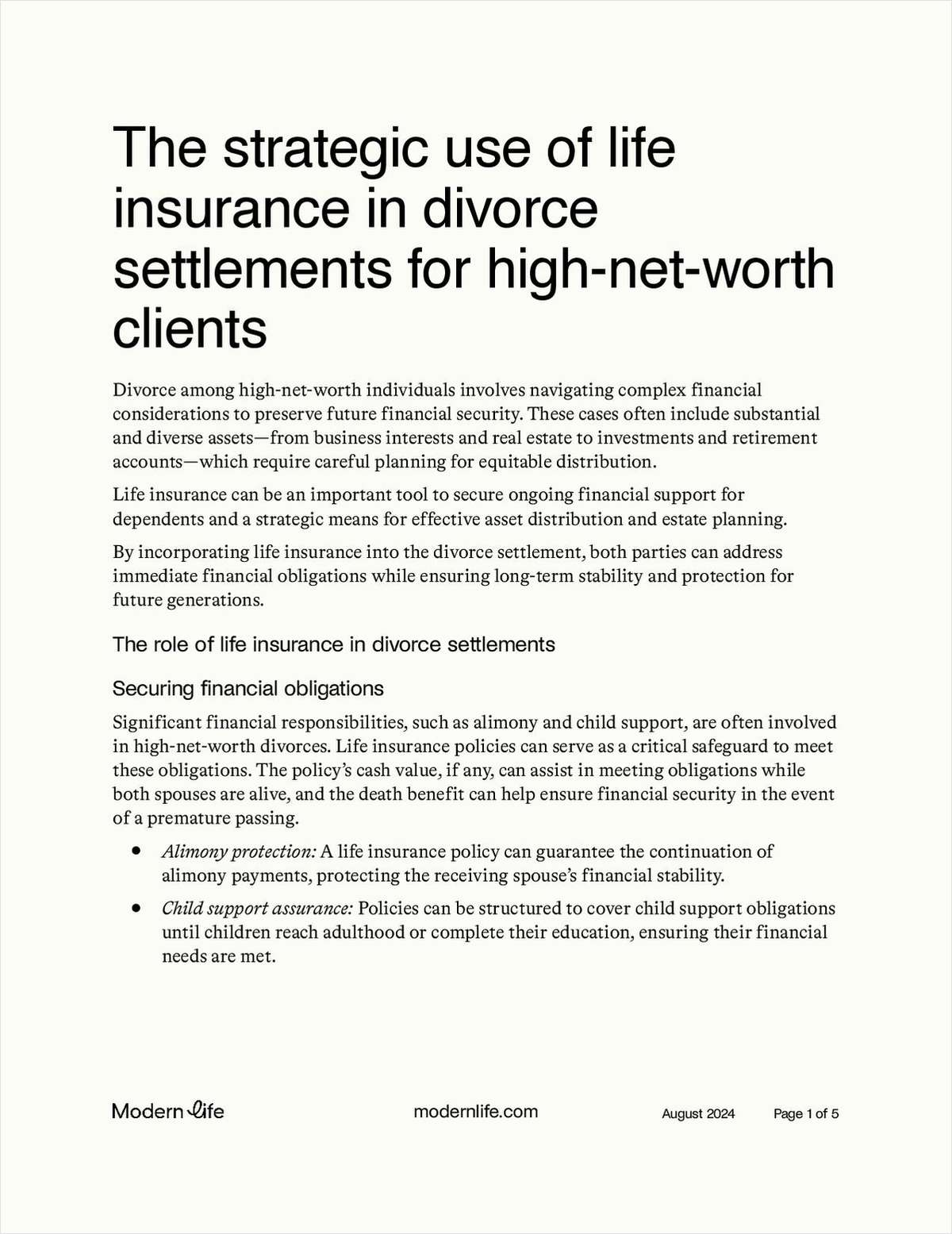Are the U.S. economy and stock market ready to get back to business, or will the New Year bring more of the same old grind? That is the deceptively simple question we posed to our panel of eight seers who comprise Investment Advisor's Market Strategy Committee.
Their collective answer should give you and your clients reason for hope: While the heady market days of the 1990s are unlikely to return, none of the members sees 2003 turning into an absolute disaster. Only one, perennial bear A. Gary Shilling, thinks the stock market will finish next year dramatically worse off than it is today–and even he thinks the market's year-end levels will be above where he expects them to bottom out a few months before.
Indeed, there are reasons to be sanguine as we look a year down the road (all of the panelists' 2003 expectations can be seen in Table 1 to the right). Not irrationally exuberant, mind you. But at least most of our experts think it's time to put away the Prozac.
To be sure, the economy and markets may still have to grapple with such bedrock issues as a possible war with Iraq, more layoffs, and rising consumer debt. But interest rates and inflation are both back to where they were when Ike was in the White House and tailfins were all the rage. Productivity remains robust, indicating corporations are building a solid base for increased profits once GDP comes out of its funk. And with George W. Bush in the White House and both houses of Congress back under Republican control, the odds of new fiscal stimuli via investor-friendly tax cuts on capital gains and other items have risen dramatically.
Even the calendar may work in investors' favor. Arnold Kaufman, editor of Standard & Poor's The Outlook and a longtime IA crystal-ball gazer, notes that the S&P 500 index has gained an average of 14% in the third year of presidential electoral cycles, going all the way back to 1928. Says Kaufman: "There is a very good chance that the bottom of the bear market has been seen."
An 8% Gain?
Those panelists choosing to predict the market's course a year or so ahead see the S&P gaining around 8% in 2003 from its level in mid-November. If that proves to be the case, the strategy committee's average asset allocation–57.5% equities, 30.4% fixed income, and 12.1% cash–should yield a tidy return by year end. But while many panel members continue to favor such defensive stock market sectors as healthcare, some are starting to shift into industries that should get a boost from an economic recovery.
Kaufman, for example, is starting to favor trucking stocks. Mark Balasa, president at the Alpha Group in Schaumburg, Illinois, suggests that beaten-down telecommunications providers will be the ones to watch in '03. "People still use the stuff, even though there still is overcapacity," he says. And Richard Bernstein, chief U.S. strategist at Merrill Lynch & Co. in New York, is growing optimistic over energy issues. He suggests a broad move into the energy select sector SPDR (XLE), or the iShares U.S. Energy Sector Fund (IYE), both of which have fallen more than 30% since mid-2001.
Bonds, however, are another story. Any asset allocation plan needs bonds, of course, if only to provide some current income and offset the volatility of equities. But with 10-year Treasuries yielding less than 4% and an economic recovery possibly pushing short-term interest rates up by late 2003, few of our experts think that bonds will offer a particularly pleasant ride. After the credit market's huge recent gains, says Balasa, "we know that bonds are going to have a tough go of it as rates go the other way. The bonds that we have are very short-term–one to two years."
As advisors, of course, it's your call in the end. Whether you use our experts' utterings as a benchmark or a backstop for your investment policy, or simply view the consensus as the reason to take a contrarian stance, we thought that you should hear the experts out in detail. Here is the reasoning behind their forecasts:
Hold On–Bumps Ahead
Gail Dudack, SunGard Institutional Brokerage
Don't be surprised if 2003 gets off to a rocky start, says SunGard's chief investment strategist. "There are a lot of risks in the economy for the short run, [and] the market lows are likely to materialize in the first half of the year. I do think we will go lower before we go higher. Everything I look at has been suggesting that the S&P will actually trough somewhere below 700. There is going to be a point at which the market will find its low and then it will have a 30% to 50% move." Still, says New York-based Dudack, "I think the S&P is going to be trapped in a range of 650 to 950 or 700 to 1000. We haven't hit bottom, but we will hit the top by next year."
Dudack thinks that accounting scandals will continue to weigh on the market for some time. "The Securities and Exchange Commission continues to look at a number of companies, and that to me is a good thing. But it doesn't mean it is the end of scandals. And while earnings growth is going to be hampered in the short run, it will be better in the long run. Earnings will become cleaner, better, and more solid. They are still a mess because the SEC has three different ways to disclose them. There is a lot of messiness in the accounting area, but it will get cleaner in the next 12 months."
Which stock groups does Dudack like? Healthcare, consumer staples, defense, and natural gas. "As a group, they have the most predictable earnings. They are things people will spend money on. My concern is that the consumer has really held this economy together this year, and will unravel next year. Who will pick up the slack? You still have to buy food and drugs, and natural gas has a very positive demand."
Stay away from technology, financials, and consumer cyclicals, she advises. "Technology is still overvalued, and the financial sector always contains the most risk in a post-stock market bubble environment." As for consumer cyclicals? "We have reached the end of the cycle in terms of what lower interest rates can do to proper cyclicals."
And keep an eye on the dollar. The greenback "is a very important economic indicator right now. The risk of deflation in the U.S. increases if the global economy weakens and we don't seem to watch that very carefully. If the dollar goes to new highs, the rest of the world is in big trouble. That is what could pull us into a deflationary cycle." –M.L.F.
"The Bottom Has Been Seen"
Arnold Kaufman, Standard & Poor's
"There is a very good chance that the bottom of the bear market has been seen," says The Outlook's editor. "The low in early October will probably not be penetrated. But the recovery is still in an embryonic stage, and we are still in a stage of declining peaks and troughs. With a 7% increase, the S&P would surpass 963, which was the rally high off the July low. That would give us an indication that this is the start of the bull market."
Right now, Kaufman feels, the market is experiencing "spontaneous combustion off the bottom. There wasn't any real good news to turn the market around. It has obviously gone down far enough in an emotionally charged decline that carried stocks below where the fundamentals would dictate. And that allowed the market to turn up very easily and quickly. Institutions will realize that all of a sudden, and start buying again. It has been fairly obvious that large investors are supporting the market. You see gains on bad news."
Kaufman is picking industry sectors in a balanced fashion for 2003. He likes managed healthcare, household products, homebuilding, and trucking–"trucking being business-cycle sensitive, and consumer staples being more defensive." Managed healthcare, meanwhile, seems to have the healthiest trend in the healthcare group. And homebuilding? While people have been predicting the end of the boom, it isn't happening. Interest rates are staying low and refinancing is strong. Homebuilding stocks, because of skepticism, are selling lower than the average historical multiple for the group.
But he counsels steering clear of gold, REITs, wireless telecom, and semiconductors. He warns that rising vacancy rates will pressure commercial REITs. As for gold, "We think the primary trend in the stock market will be upward, and anxiety over terrorism will diminish. So gold has had its run." –M.L.F.
A Contrarian's Call
Mark Balasa, Alpha Group
Alpha Group's president looks to history for guidance. "If you look at 1939-41, 1972-74, and late 1987, a quarter of the return for the market came in the first few weeks and half came in the first three months [after the bottom was reached]. So we don't know if the market has bottomed yet, but things have been good since Oct. 9."



